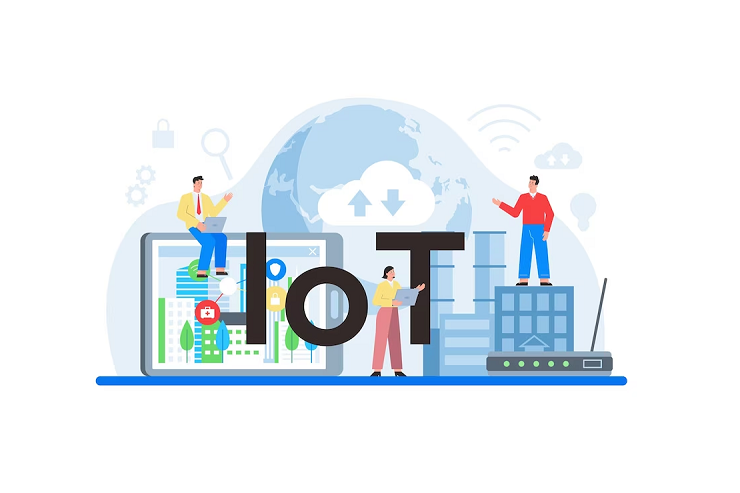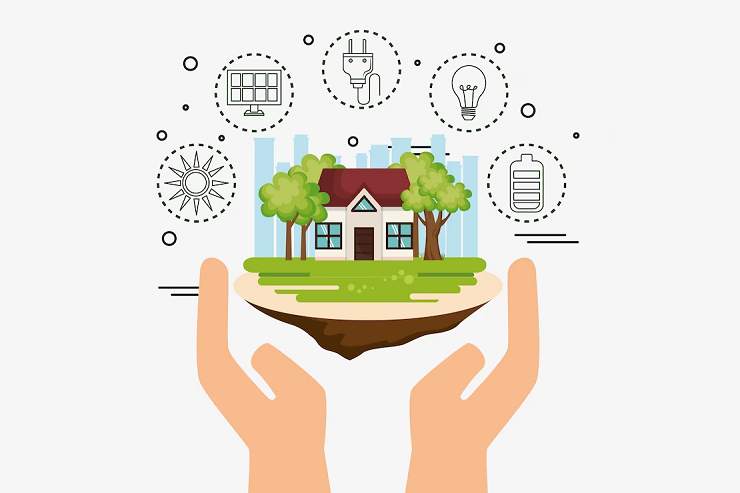
In the rapidly evolving landscape of urbanization, smart cities have emerged as a beacon of hope for more sustainable, efficient, and livable urban centers. One of the key technological drivers behind this transformation is the Internet of Things (IoT). In this blog, we will delve into the role of IoT in shaping the cities of tomorrow, focusing on its impact, applications, and the challenges it presents.
Understanding IoT In The Context Of Smart Cities
Before we dive into the applications of IoT in smart cities, let’s grasp the fundamentals of the Internet of Things. IoT refers to the network of interconnected devices and sensors that collect and exchange data over the internet. These devices, from everyday objects like smartphones and streetlights to specialized sensors, create vast data-sharing opportunities.
In the context of smart cities, IoT serves as the nervous system, collecting and disseminating data to optimize urban life, including transportation, energy consumption, healthcare, and public safety. It transforms inert infrastructure into dynamic and responsive entities, facilitating more informed decision-making and enhancing the quality of life for city dwellers.
Applications Of IoT In Smart Cities
-
Smart Transportation
IoT plays a pivotal role in revolutionizing urban transportation. It enables real-time monitoring of traffic conditions, parking availability, and public transportation systems. Smart traffic lights can adjust their timings based on traffic flow, reducing congestion and emissions. Moreover, connected vehicles and infrastructure can communicate with each other to prevent accidents and streamline traffic.
Additionally, electric scooters and bikes equipped with IoT devices have become a popular mode of urban transportation. Users can locate, rent, and pay for these vehicles using smartphone apps, contributing to reduced carbon emissions and improved air quality.
-
Energy Efficiency
Smart energy grids are becoming increasingly common in smart cities. IoT sensors collect data on energy consumption patterns, allowing for better management and optimization of resources. This can reduce energy waste and lower carbon emissions, contributing to a more sustainable urban environment.
Furthermore, IoT helps cities better manage their energy grids. Smart meters and sensors can monitor energy usage in real-time, enabling utilities to optimize distribution and reduce wastage.

-
Environmental Monitoring
IoT sensors monitor air and water quality, helping cities respond to environmental challenges like pollution or climate change. This data can be used to develop policies and strategies to improve the urban environment’s quality.
-
Public Safety
IoT enhances public safety by enabling real-time monitoring and rapid response systems. Surveillance cameras, connected to the internet, can continuously monitor public spaces. Additionally, sensors in infrastructure can detect and respond to emergencies, such as fires or earthquakes, more efficiently.
In a natural disaster or emergency, IoT sensors can provide real-time data on factors such as air quality, water levels, and seismic activity. This information is crucial for timely and informed decision-making by city authorities.
-
Waste Management
Smart waste management systems use IoT to optimize garbage collection routes. Sensors placed in bins can signal when full, reducing unnecessary pickups and lowering operational costs.
-
Healthcare
In the wake of global health crises, IoT has gained prominence in healthcare delivery. Smart cities can use IoT to remotely monitor patients, track disease outbreaks, and improve healthcare access through telemedicine solutions.
In addition, IoT can be used to optimize healthcare resource allocation. Hospitals can track the availability of beds, equipment, and staff in real-time, ensuring efficient patient care during critical situations.

Challenges And Concerns
While IoT holds great promise for smart cities, it also comes with a set of challenges and concerns that need to be addressed:
-
Security And Privacy
With the increasing number of connected devices, the potential for cyberattacks and data breaches grows. Ensuring the security and privacy of sensitive data collected by IoT devices is paramount.
-
Data Management
The sheer volume of data IoT devices generates can be overwhelming. Smart cities need robust data management and analytics tools to derive meaningful insights from this wealth of information.
-
Infrastructure Investment
Building the necessary IoT infrastructure requires significant investments. Cities must carefully plan and allocate resources to ensure the successful implementation of IoT projects.
-
Interoperability
IoT devices and systems from different manufacturers need to be able to communicate with each other seamlessly. Interoperability standards are crucial to avoid fragmentation and maximize the benefits of IoT.
-
Digital Divide
Not all citizens may have equal access to IoT-enabled services. Ensuring IoT benefits reach all population segments is essential to prevent exacerbating inequalities.

Conclusion
Integrating IoT into smart cities represents a transformative step toward more sustainable, efficient, and livable urban centers. Through its diverse applications in transportation, energy management, environmental monitoring, public safety, waste management, and healthcare, IoT is reshaping the way cities function. However, it is essential to address challenges related to security, data management, infrastructure investment, interoperability, and the digital divide to fully harness IoT’s potential in building tomorrow’s urban centers.
As smart cities continue to evolve, IoT will remain a critical component in the quest to create urban environments that are responsive to the needs of their inhabitants, environmentally sustainable, and economically vibrant. Through thoughtful planning, innovation, and collaboration, we can pave the way for a more brilliant, brighter future in our cities.
